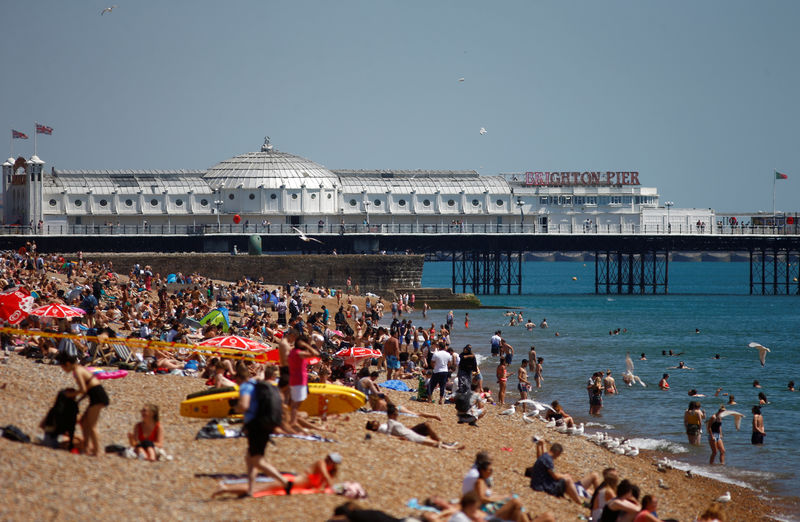By Geoffrey Smith
Investing.com -- The recovery trade in Europe is finally on.
The benchmark Stoxx 600 hit an 11-week high morning trade on Tuesday as U.K. institutions reopening after the long holiday weekend played catch up with a rally that had started on Monday in response to the lifting of various lockdown measures, notably Spain’s reopening of its tourism sector.
By 5:30 AM ET (0930 GMT), the Stoxx 600 was up 1.1% at 348.98, having earlier hit an intraday high of 349.72, its highest since March 10. The tourism-sensitive Spanish IBEX 35 outperformed again with a gain of 1.4%, while the U.K. midcap index, the FTSE 250, rose 3.2% in anticipation that the government will be forced to relax lockdown measures that its own staff can’t be bothered to observe. Pub operator Mitchells & Butlers (LON:MAB) stock rose 26.5% (partly inspired by last week's deal between Carlsberg (OTC:CABGY) A/S B (CSE:CARLb) and Marston’s (LON:MARS).
While that’s not a clear breakout from the sideways trading range of recent weeks for the Stoxx, the odds must be that it is pulled higher when U.S. markets also reopen after the Memorial Day holiday later on Tuesday.
It’s possible to argue with the long-term benefits of buying into stocks whose business model has been ruthlessly exposed by the pandemic. But in the short term, at least, many institutions will be forced back into sectors that have underperformed in the last two months or risk missing their own performance benchmarks.
Hence the startling outperformance – for a second straight day – of the travel and leisure sectors. IAG (LON:ICAG) and EasyJet (LON:EZJ) shares rose more than 20%, while Norwegian Air Shuttle ASA (OL:NWC) stock rose 17% and Melia Hotels (MC:MEL) rose another 17%.
“Late innings but not the last,” analysts at Goldman Sachs wrote in a weekly note to clients. They argued that sentiment towards the recent rally has started to shift, away from skepticism and the conviction that it was being fueled only by central bank support, towards the acceptance of a more fundamental improvement in the economic outlook.
Analysts have been saying for months that they expected the bottom of the downturn to occur in the second quarter. The modest improvements in Germany’s Ifo Business Climate on Monday, and in the GfK consumer confidence survey out earlier on Tuesday, appear to back that up.
But the more important factor is surely that investors are reacting to what they are seeing and hearing themselves. There are more people out of doors, more cars on the streets (including those of U.K. government advisors checking their eyesight), and the direction of travel as regards government policy has clearly changed for the better, with countries reopening borders, relaxing lockdowns and – according to German reports – preparing to lift travel warnings for tourists.
On top of all this, there appears to be more stimulus on the way: Bank of France Governor Francois Villeroy de Galhau came out strongly in a speech for acting “rapidly and powerfully”, comments interpreted by many as a signal that the European Central Bank will expand its latest bond-buying program, the so-called PEPP, at its council meeting on June 4.
What’s not to like?
